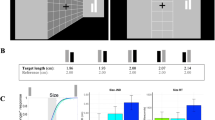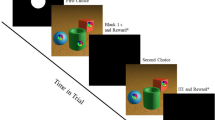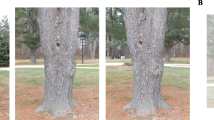Abstract
Two chromatically identical patterns, a diamond and a ladder, were shown on a computer touchscreen. Domestic hens were reinforced for pecking at the pattern that was the highest up on a grid that provided pictorial depth information, i.e. on the pattern that to a human appears as being the furthest away. Every tenth trial was a non-rewarded probe trial with the two patterns partially overlapping. In the absence of other cues depth stratification can occur on the basis of a minimization of interpolated occluding contours. In humans the diamond is usually perceived to be in front of the ladder because shorter interpolated contours are needed to account for the occlusive effect of the diamond on the ladder. The hens pecked more often at the ladder during the probe trials. The results suggest that the avian and mammalian visual systems operate along similar principles when dealing with the problem of solving occlusion indeterminacy in chromatically homogeneous patterns.
Similar content being viewed by others
Author information
Authors and Affiliations
Additional information
Received: 26 March 1999 / Accepted after revision: 17 September 1999
Rights and permissions
About this article
Cite this article
Forkman, B., Vallortigara, G. Minimization of modal contours: an essential cross-species strategy in disambiguating relative depth. Anim Cogn 2, 181–185 (1999). https://doi.org/10.1007/s100710050038
Issue Date:
DOI: https://doi.org/10.1007/s100710050038




